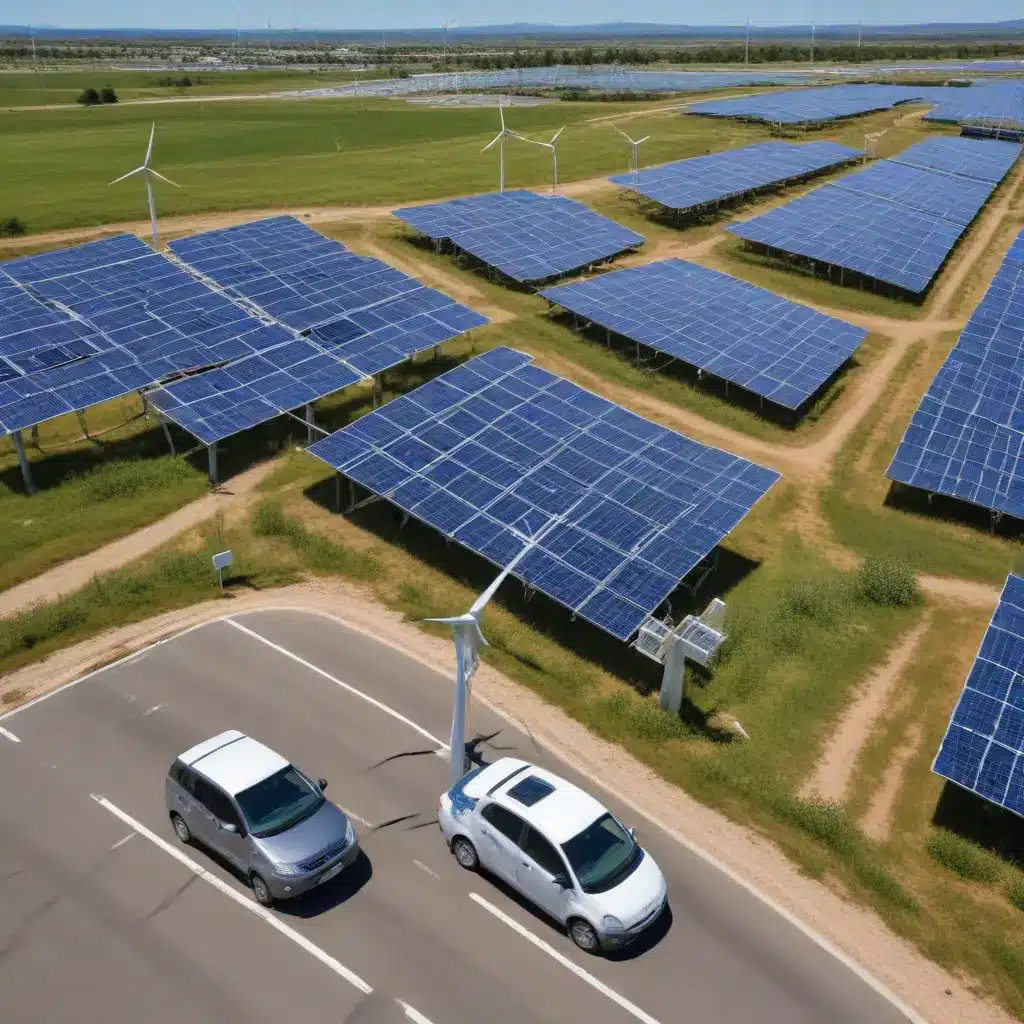
Optimizing Solar and Wind Energy Integration in Grid-Connected Electric Vehicles
The global demand for energy has surged in recent decades, driven by population growth and rising living standards. As modern societies grapple with this challenge, there is a growing recognition of the need to transition towards sustainable, renewable energy sources to curb greenhouse gas emissions and mitigate climate change. In this context, the integration of electric vehicles (EVs) and renewable energy sources (RES) such as solar photovoltaics (PV) and wind turbines (WT) has emerged as a crucial strategy for Europe’s clean energy future.
Renewable Energy Integration
Solar Energy Considerations: The conversion of solar radiation into electrical power through PV technology is a key component of Europe’s renewable energy portfolio. PV systems leverage the principle of the photovoltaic effect, where semiconductor materials absorb sunlight and generate direct current (DC) electricity. The output power of a PV array is determined by factors such as solar irradiance, ambient temperature, and the efficiency of the PV modules and inverters.
Wind Energy Considerations: Wind energy, harnessed through the use of wind turbines, is another vital RES in Europe’s energy mix. Wind turbines convert the kinetic energy of the wind into electrical power. The power generation capacity of these turbines is directly proportional to the wind speed, with higher wind speeds enabling greater power output. Integrating wind energy into grid-connected systems requires careful consideration of factors like wind speed variability and grid stability.
Hybrid Renewable Systems: To enhance the reliability and sustainability of renewable energy supply, hybrid systems that combine multiple RES, such as solar PV and wind turbines, are increasingly being deployed. These hybrid systems leverage the complementary nature of different renewable sources, smoothing out the inherent variability and intermittency of individual RES. This integration can contribute to a more stable and consistent renewable energy supply, better aligning with the dynamic demands of grid-connected EVs.
Grid Integration Challenges
The widespread adoption of EVs and the growing penetration of RES pose several challenges for grid integration and efficient energy management.
Power Fluctuations: The intermittent and variable nature of solar and wind energy generation can lead to fluctuations in power supply, potentially causing instability and imbalances in the grid. Addressing these power fluctuations is crucial to maintain grid reliability and power quality.
Voltage Regulation: The integration of distributed RES and EV charging loads can introduce voltage deviations and instability within the grid. Effective voltage regulation strategies are necessary to ensure the grid’s resilience and the reliable operation of connected devices.
Load Balancing: The simultaneous charging of multiple EVs, especially during peak demand periods, can strain the grid and lead to congestion. Careful load balancing and demand-side management are required to optimize the integration of EV charging with the grid’s capacity and available renewable energy generation.
Energy Storage Solutions
To address these grid integration challenges, energy storage systems (ESS) have emerged as a critical enabling technology. Battery storage systems (BSS), flywheels, and pumped hydro storage can play pivotal roles in enhancing the flexibility, resilience, and sustainability of grid-connected renewable energy and EV integration.
Battery Storage Systems: BSS can store excess renewable energy generated during periods of high production and discharge it during periods of high demand or low renewable generation. This load-balancing capability helps mitigate the variability of RES, improve grid stability, and reduce the need for fossil fuel-based backup generation.
Flywheel Energy Storage: Flywheels leverage the principle of kinetic energy storage, where excess energy is used to accelerate a spinning rotor. Flywheels can provide rapid response and high-power output, making them suitable for applications such as frequency regulation and voltage support in grid-connected renewable energy and EV systems.
Pumped Hydro Storage: Pumped hydro storage systems use excess renewable energy to pump water to an elevated reservoir, storing the potential energy. When needed, the water is released to generate electricity through hydroelectric turbines. This energy storage solution can support the integration of intermittent RES and provide grid-scale energy storage capabilities.
Optimization Strategies
To optimize the integration of grid-connected EVs and renewable energy sources, various strategies and technologies have been explored.
Demand-Side Management: Intelligent demand-side management (DSM) algorithms can coordinate the charging and discharging of EV batteries to align with the availability of renewable energy generation. By incentivizing EV owners to charge during periods of high renewable energy production, DSM can enhance the utilization of clean energy sources and reduce the strain on the grid.
Vehicle-to-Grid (V2G) Technology: V2G technology enables EVs to function as distributed energy storage resources, allowing them to feed electricity back into the grid during periods of high demand or low renewable generation. This bidirectional energy flow can help stabilize the grid, improve the integration of RES, and provide ancillary services to the power system.
Advanced Control Algorithms: Sophisticated control algorithms, such as those leveraging artificial intelligence (AI) and machine learning (ML), can optimize the energy management of grid-connected renewable energy and EV systems. These algorithms can predict renewable energy generation, forecast EV charging patterns, and intelligently coordinate the charging and discharging of ESS to maximize the utilization of clean energy sources while maintaining grid stability and reliability.
The integration of grid-connected EVs and renewable energy sources is a critical component of Europe’s clean energy transition. By harnessing the synergies between these technologies and employing advanced energy storage solutions, grid operators and policymakers can optimize the efficiency, sustainability, and resilience of the power system. As the adoption of EVs and RES continues to grow, the implementation of innovative optimization strategies and control mechanisms will be crucial in realizing a sustainable, low-carbon energy future for Europe.







